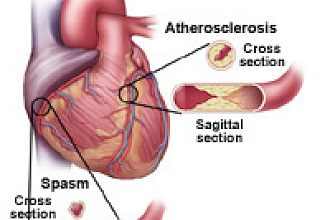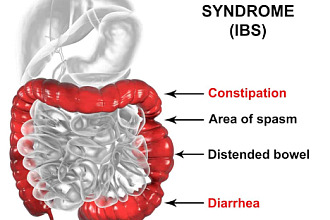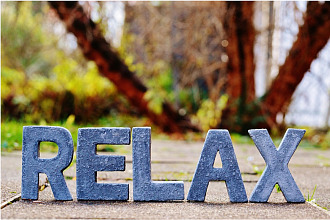Do you find yourself using social media until you close your eyes to rest at night, picking it up immediately upon awakening in the morning? Do you spend countless hours endlessly scrolling through video posts? Have you missed deadlines at school or work or been distracted during important meetings due to social media use? Do you feel uneasy when you haven't checked your social media account for a while? Do you use social media to escape when feeling down, upset, or angry? If you answer yes to a few of these questions, you may be addicted.
What is a social media addiction?
Social media addiction is a type of behavioral addiction characterized by compulsively engaging with social media platforms, leading to significant disruption in important life domains including interpersonal relations, work or study performance, and physical health (1). The widespread use of social media in America and across the globe over the past two decades indicates a considerable number of addicts (2, 3). On average, American teenagers spend 4.8 hours per day on social media platforms (4). Is there a negative impact associated with this extensive use of social media? Let's explore how social media can affect mental health and alter the structure of our brains.
Brain changes
Believe it or not, social media addiction can actually affect the very structure of our brains (5). Evidence from a recent systematic review found that social media addiction can lead to reduced gray matter volume of multiple regions of the brain, which include the ventral striatum, amygdala, subgenual anterior cingulate cortex, orbitofrontal cortex and posterior insula (6). In particular, the reduced size of the amygdala (the part of the brain that processes emotions) can lead to generating strong impulsive behaviors. This structural change is also similar to what is observed in the brains of those addicted to other substances. Just like other addictions, dopamine is affected as well. Men with internet addiction were found to have increased dopamine secretion with an associated decrease in dopamine receptor availability in the striatum.
Aside from the anatomical and biochemical brain changes, it’s interesting to note that app-developers intentionally design their applications to grab and keep your attention (7). Features such as endless scrolling, social rewards (think “likes”), and showing us things we like are tactics utilized in order to keep us coming back for more.
Cyberbullying and sexual predators
Cyberbullying is considered a global public health issue. It occurs when someone uses technology to demean, inflict harm, or cause pain to another person (8). About 1 in 4 teens have experienced cyberbullying. This is concerning when you consider that cyberbullying has been associated with depression, suicidality, anxiety, hostility/ aggression, substance misuse/use, self-harm, ADHD/ hyperactivity, low self-esteem, peer problems, stress/ distress, and loneliness according to a systematic map of systematic review articles published in 2020 (9).
Another dangerous aspect of social media is sexual predators. An executive from a tech company called Bark, which provides parents with products to help manage content their children are exposed to on the internet, went undercover on social media by posing under multiple aliases as teenage girls. By the end of two-and-a-half hours of posing as an 11-year-old girl, they had seven video calls, ignored another two dozen of them, text-chatted with 17 men, and saw the private parts of 11 of those men (10). This shocking example gives us a small taste of the dark world that social media opens to the minds of young people. Setting boundaries for our young people and for ourselves is key.
Social comparison
Social comparison is another potentially negative hit that social media poses to our mental health. Social media users generally strategically choose their posts and create images of themselves which are manipulated to reflect societal ideals. After all, most people are not going to intentionally post themselves in a negative light, unless, of course, it would gain them more online attention. Research has confirmed that, because most people try to portray themselves in the most favorable light on social media, it leads to upward comparisons.
Upward comparisons are when people compare themselves against someone they perceive as superior. When comparing oneself to another, there are two common reactions: contrast and assimilation. Assimilation is when you focus on similarities to the standard you are comparing yourself to, whereas contrast is when you focus on the differences. Assimilation can lead to positive emotions, but the most common response to upward comparisons tends to be contrast, which has been shown to lead to negative emotions and lowered self-evaluations (11).
A good thing to keep in mind when using social media is that you don’t know what the person you see in the selfie was doing before or after the picture was taken. You also don’t know what’s behind the makeup and phony smile. It’s possible that it’s real, but it’s more likely that the pictures/experiences represented have been manipulated and edited to portray a false reality.
If you find yourself comparing yourself to others on social media, remember the words of a wise man written almost 2,000 years ago, before online social media platforms even existed: “Oh, don't worry; we wouldn't dare say that we are as wonderful as these other men who tell you how important they are! But they are only comparing themselves with each other, using themselves as the standard of measurement. How ignorant!” (12)
Fear of Missing Out
One aspect of social media use that has been shown to negatively affect our mental health, is something known as FoMO (Fear of Missing Out). FoMO is the pervasive apprehension that others might be having rewarding experiences from which one is absent, which can lead to a desire to remain continually connected in order to avoid missing out (13). Not surprisingly, FoMO has been correlated with depression, anxiety, and neuroticism (14). If you ever experience a sense of fear during the moments when you don’t have access to your social media account, you may be a victim of FoMO. Consider exercising your cognitive powers to turn your FoMO into a JoMO (Joy of Missing out). How can you turn your FoMO into JoMO? One very helpful tip is to structure your time.
By scheduling times that you access social media, you become free to experience real life. Imagine how much more you could accomplish during the 4.8 hours you are currently utilizing social media. You could learn a new skill, travel to a new place, make a new recipe, read an interesting book, play with your pet, feed the homeless, or simply spend some quality time with your family. When you experience real-life, you can truly have joy that you're missing out on the next viral video about who knows what.
What to do about social media?
When we begin to understand the detrimental effects that social media can have on our brains and mental health, we may begin to wonder, what can I do about this? Social media addiction can be a difficult habit to kick. It may be helpful to budget your time by creating a daily goal-oriented schedule with a limited amount of time (ideally less than 1 hour) scheduled for social media use. If you need to be on your device for work, school, or other projects which require your complete focus, turn off all push-notifications and other distractions. If you still can’t seem to stay away from social media, even with boundaries, you may need a complete fast from social media for 6 weeks. Delete all those distracting apps, get out there, and do something fun in the real world with all your newly gained free time. Even better, ask a friend to join you in your journey to live free from social media addiction. You’ll be surprised how much more productive, enjoyable, and restful your life will become.
References
- Cheng, C., Ebrahimi, O. V., & Luk, J. W. (2022). Heterogeneity of Prevalence of Social Media Addiction Across Multiple Classification Schemes: Latent Profile Analysis. Journal of Medical Internet Research, 24(1), e27000.
- Pew Research Center. (2021). Social Media Fact Sheet. Pew Research Center: Internet, Science & Tech.
- Belle Wong, J. (2023). Top Social Media Statistics and Trends of 2023. Forbes.
- Rothwell, J. (2023). Teens spend average of 4.8 hours on social media per day. Gallup.com.
- He, Q., Turel, O., & Bechara, A. (2017). Brain anatomy alterations associated with Social Networking Site (SNS) addiction. Scientific reports, 7, 45064.
- Wadsley, M., & Ihssen, N. (2023). A Systematic Review of Structural and Functional MRI Studies Investigating Social Networking Site Use. Brain sciences, 13(5), 787.
- Montag, C., Lachmann, B., Herrlich, M., & Zweig, K. (2019). Addictive Features of Social Media/Messenger Platforms and Freemium Games against the Background of Psychological and Economic Theories. International journal of environmental research and public health, 16(14), 2612.
- APA. (n.d.). Cyberbullying: What is it and how can you stop it?. American Psychological Association.
- Kwan, I., Dickson, K., Richardson, M., et al. (2020). Cyberbullying and Children and Young People's Mental Health: A Systematic Map of Systematic Reviews. Cyberpsychology, behavior and social networking, 23(2), 72–82.
- Powell, S. (2020, April 3). I’m a 37-year-old Mom & I Spent Seven Days Online as an 11-year-old girl. here’s what I learned. Medium.
- Smith, R. H. (2000). Assimilative and contrastive emotional reactions to upward and downward social comparisons. Handbook of Social Comparison, 173–200.
- 2 Corinthians 10:12 NLT
- Przybylski, A. K., Murayama, K., DeHaan, et al. (2013). Motivational, emotional, and behavioral correlates of fear of missing out. Computers in Human Behavior, 29(4), 1841–1848.
- Fioravanti, G., Casale, S., Benucci, S. et al. (2021). Fear of missing out and social networking sites use and abuse: A meta-analysis. Computers in Human Behavior, 122, 106839.


























